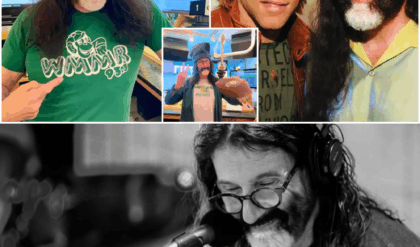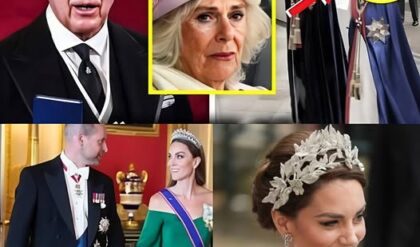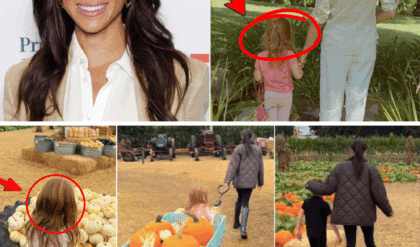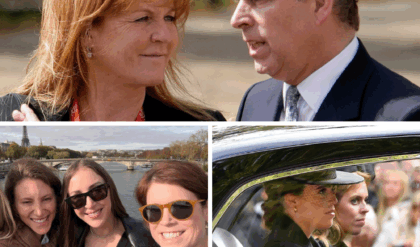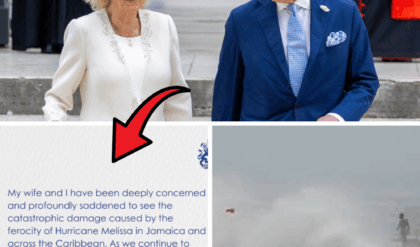Recently, I watched dollar bills rain down onto a Frodo Baggins drag performer at a Bushwick nightclub. Surrounded by kissing hobbits, a dancing Ent, a wizard in pole-dancing heels, and a hundred other nerds, I watched queen Frodo lip-sync Miley Cyrus’s “It’s the Climb” en route to a metaphorical Mount Doom and couldn’t help but wonder, “What would the dead Catholic dude who wrote The Lord of the Rings think about all of this?”
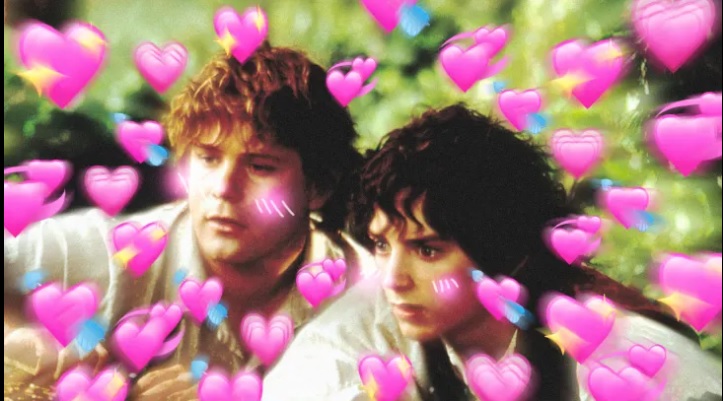
J.R.R. Tolkien probably wouldn’t have approved of a night branded “Fagtasia: LOTR is about to get HELMS DEEP!!” Chances are, it would have melted his Victorian Era-born brain. But the opinions of the presumably but not definitively straight Tolkien are ultimately beside the point: The Lord of the Rings is for the shes, theys, and gays.
And now that the films’ rights have sold for an estimated $2 billion, with talks of a Marvel-style film universe in the works, I just don’t want anyone to forget LOTR’s women- and queer-led fandom. Or worse, trivialize it.
The mlm in Tolkien works rated
FrodoSam- haters will say Sam is a straight man which is untrue. They’re in a throuple in the books Sam and Rosie literally move in with Frodo. 10/10
BoromirAragorn- Boromir had a crush on Aragorn fr but their love is platonic. 10/10
— 🪬 Caleb 🪬 (@sethpuertoluna) April 19, 2021
As a pansexual woman who has only recently leaned into her queerness, The Lord of the Rings books and Peter Jackson’s films were essential in nurturing my identity outside traditional gender roles. I’m a woman in the sense that I feel like I have been reading for the role of Woman for 31 years, but there are days when I feel more like a hobbit, ethereal elf, or anthropomorphic tree. I’ve always known this in my bones, but the strobe lights of Fagtasia illuminated it on another level.
I discovered The Lord of the Rings in the 1990s, in the fourth grade, when my friend’s mom read the trilogy to us. I started going barefoot at school and keeping my diary in dwarven runes. I parted my hair over my ears like an elf and tried to get really good at hopping around rocks like I imagined Gollum would.
I was initially skeptical of Peter Jackson’s movies, but they gave me new permission to embody the story’s characters on the playground. Éowyn, who I saw as a gender-defying shieldmaiden of Rohan, was no longer just a character in a book but a person I could point to on a poster. Galadriel, who Tolkien described as an elf “of Amazon disposition” who “bound up her hair as a crown when taking part in athletic feats,” was clearly the dom in her marriage, even if she didn’t wield a sword in the movies.
But it was seeing Elijah Wood’s Frodo in theaters that really rearranged my atoms. Film-Frodo was closer to my height as a kid, but he was unlike any boy or girl I knew. He was emotional and adventurous. He spooned his gardener-turned-life partner, Sam, and it wasn’t a big deal. His eyes were the color of blue Gatorade when you let an ice cube melt in it from the cafeteria. Today, his shag haircut is the preferred chop of many Bushwick gays. I wanted to both be him and be a version of myself desired by him—I wanted to oscillate between the skin of a hairy little stinker and a towering she-elf with a star- and not a male-bound gaze.
The result was a kind of Middle Earth fernweh and gender euphoria, a proto-goblincore state in which I just wanted to feel safe in my hobbit hole, kiss my friends on the forehead like the Fellowship members on-screen, and embody any number of the legendarium’s gender-bending beings, from its bearded Dwarven women to Sauron, the shapeshifter. More than plot, Tolkien gave vibes and a gentle, often ambiguous nature to many landscapes and characters, whether they lived in the pre-Industrial Revolution-inspired Shire or Rivendell, an elven refuge dedicated to food, reading, and resting, to paraphrase Tolkien. The closest I’ve come to finding my own Rivendell was when my friend Luis started an abolitionist, queer-friendly community garden a few years ago on the same principles.
https://www.tiktok.com/@lesbiansforquanyizhen/video/7165348597188349230
That Tolkienian blend of escapism and community is part of why the books, and, more recently, Jackson’s trilogy, have become such mainstream successes. In the 1970s, the books’ popularity rose in tandem with the hippie movement, which heralded hobbits as eco-warriors; Jackson’s films single-handedly boosted, and continue to boost, New Zealand’s economy by billions. Then there was the films’ specific popularity amongst millennial women, which the New York Times investigated in 2022 and traced back to two major points: the absence of character development through sexual assault (a common trope in Game of Thrones fantasy) and the inclusion of loving male friendships. For women, LOTR wasn’t just a place of wonder but safety.
As validating as the Times’ article was, it barely scratched the surface of LOTR’s queer fanbase, which has been one of its devotees’ longest-standing yet most overlooked factions. Erran, 28, is a Tolkien book enthusiast who describes their relationship to the gender politics of the author as “cathartically combative.” “LOTR has a fascinating mix of suffocating Catholicism and strainingly repressed queer gender curiosity,” they tell me, “Almost every character is either choking under the weight of their gender-based expectations or nobly and loftily living up to them.”
Consider the character of Éowyn, a noblewoman who wants nothing more than to pick up a sword and fight. “She is given some of the most biting and compelling dialogue of any character in the whole book,” Erran adds, citing her lines from a chapter in which she discusses the ability to go to battle: “All your words are but to say: you are a woman, and your part is in the house. But when the men have died in battle and honour, you have leave to be burned in the house, for the men will need it no more.” Those words, and the rage within them, meant everything to me as a kid trying to navigate gender.
“Of course, none of this has any explicit trans-ness,” Erran says, “but it doesn’t have to in order to be applicable to trans people and trans stories. Essentially, LOTR has space for everyone, which is really a large part of its wide success.” It’s part of why the queer fandom has given us interpretations of a transgender Éowyn, bisexual Arwen, and gay Gandalf. Even Sean Astin, one of the Peter Jackson franchise’s leads, has said, “Sam and Frodo should have kissed. How do you know they didn’t?” We imagine, and we yearn.
Granted, that’s just one part of the fandom. When my queer friend Linnea and I saw an orchestra perform Fellowship’s score at Radio City Music Hall this winter, we expected a big, diverse gay turnout. The bearded-bro-who-will-lecture-you-on-WWII crowd was a reality check. And it was a stark reminder that Jackson’s trilogy is far from perfect; it’s overwhelmingly white and only passes the Bechdel Test because of a scene where Éowyn shushes a crying girl.
“It lets me be my unapologetically silly, little gay Black elf self.” —Tori
Tori, 29, is one-half of the Tolkien podcast The Sillymarillion and a newer member of LOTR’s queer and BIPOC fanbase. “I think I avoided it for so long because I was like, ‘Why would I want to watch a movie about a bunch of straight cis white men?’” she says about discovering Jackon’s films during lockdown. “Then I was shown its queer undertones and found friendships—fellowships, if you will—and acceptance I had never experienced in any other fandoms. It lets me be my unapologetically silly, little gay Black elf self.”
In 2022, Amazon’s $715 million series The Rings of Power raised the bar for Tolkien adaptations in this regard by casting women and BIPOC leads. While it didn’t give us any blatantly queer relationships, it gave us plenty of new queer-coded alliances. Unfortunately, the show also blew the lid off LOTR’s more bigoted fanbase. “I’m Black, and the toxic side of the fandom is incredibly against any fantasy races of color,” Tori tells me, “I’ve never received more blatantly racist remarks for simply being excited about Black hobbits or Black dwarves or Black elves.”
At one point, online tensions between fandoms became so intense that the original hobbit cast of Jackon’s trilogy went viral on Twitter for wearing T-shirts whose elvish translates to, “You Are All Welcome Here”:
You Are All Welcome Here @LOTRonPrime @DonMarshall72 #RingsOfPower https://t.co/8txOhlHa2f pic.twitter.com/nWytILT0zG
— Elijah Wood (@elijahwood) September 7, 2022
As a kid, It was exhausting enough to listen to grown men complain about Liv Tyler’s action sequences. I can’t imagine the frustrations of non-white fans at the lack of representation in Jackson’s trilogy. Still, I’m proud that the franchise has such staunchly inclusive main players and increasingly mainstream support. Elijah Wood hasn’t publicly embraced the internet’s #SamFrodo queer-ship like Sean Astin, but he has always given a sense of positive feedback and understanding to queer readings. When a fan at a festival presented him with gay fan art in 2005, he simply told USA Today that it was “very good work.”
In many ways, the fandom’s future stands upon the edge of a knife. Intolerant people have more space than ever on Twitter to make noise, and the uncertainty surrounding future film adaptations makes me uneasy. Yet, hope remains: there is currently a grassroots campaign underway by Tolkien-Tok creator and LGBTQ+ ally Don Marshall to release a longer version of Jackson’s films; if it works, we could finally see famously deleted scenes of women sword-fighting and talking to, instead of just shushing, each other.
Sometimes, the louder the toxic fandom gets, the more I think, “It’s working.” The more space the marginalized fans take up, the more we can address the intolerance that plagues so much of the fanbase and give it the boot on even more mainstream platforms. “It just makes me double down on showing even more excitement and joy for these characters when they appear,” says Tori about the racist comments she has received, “I can’t explain the utter joy I felt seeing [the Black elf] Arondir from Rings of Power appear on my screen!”
Tolkien might have fainted at the site of a twerking Fagtasia Frodo, but even he would recognize the long-standing power of his works’ ambiguity and escapism. If you have ever felt imprisoned by your body or its gender norms, you’ll understand Tolkien’s perspective of escapism as a heroic act. As the author once wrote, “Escape is one of the main functions of fairy-stories, and since I do not disapprove of them, it is plain that I do not accept the tone of scorn or pity with which ‘Escape’ is now so often used. Why should a man be scorned if, finding himself in prison, he tries to get out and go home?”
If you can’t go home, you can always go to Middle Earth.

